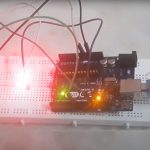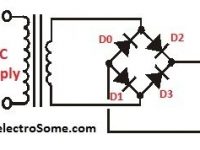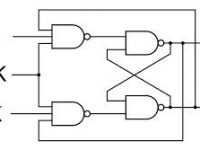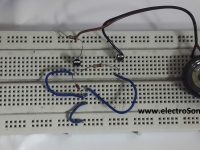Inside a Crystal Oscillator…….!!
A crystal oscillator is an electronic oscillator circuit which uses inverse piezoelectric effect, ie when electric field is applied across certain materials it produces mechanical deformation. Thus it uses mechanical resonance of a vibrating crystal of piezoelectric materiel to create an electric signal with very precise frequency. They have high stability, quality factor, small size and low cost and this makes them superior over other resonators like LC circuit, ceramic resonator, turning forks etc.
This image show a 8MHz crystal oscillator commonly used in microcontrollers and microprocessors. Although the crystal has electromechanical resonance, we can represent the crystal action by an equivalent electrical resonant circuit as show below. The inductance and capacitance L1 and C1 represents electrical equivalents of crystal mass and compliance, while the resistance R1 represents the friction of crystal’s internal structure and C0 represents the capacitance formed due to mechanical moulding of the crystal.
From the circuit we can find that it can have two resonant frequencies, series resonance and parallel resonance. Series resonance occurs when the reactances produced by capacitance C1 and inductance L1 becomes equal and opposite. Thus during this condition impedance is very low, equal to resistance R1. Parallel resonance occurs when the reactance of series resonant leg becomes equal to reactance produced by capacitance C0. During this condition the crystal offers very high impedance to the external circuit.
Impedance versus frequency graph is shown below…..
The entire crystal is covered with metal casing as shown in the image.
On removing this metal casing we can see a net like blanket to protect crystal from mechanical damages.
In the above image we can see the net casing inside the outer metal casing and crystal is placed inside it.
On removing the metal covering we can see the quartz crystal plate and how it is connected to the outside electrodes.





















if we apply AC power then it oscillate it can be understandable… But how it vibrate even thought it getting continues DC power. Ex 8051 oscillator?
Thanks ligo.
Crystal will oscillate continuously but after some time it will lose its energy (damped oscillations). So to get sustained undamped oscillations, microcontrollers internal circuit will provide energy to compensate the loss.
Could anyone please elaborate, Whether MCU Continuously giving electrical signals, to get oscillations from crystal or what .. if it is simply one pulse then crystal should oscillate even after board power is turned off.. please enlight me if i’m wrong.
When MCU provides electrical signals, it will start vibrating. That frequency will be stable from which we will get oscillations….
my question is if crystal gives electrical pulses in Microcontroller circuits then from where it receives mechanical vibration?
Its happan man
Very useful, thanks. (Seeing is better than imagining :-))
thank you for showing it to us
it was broken before you open it!!!